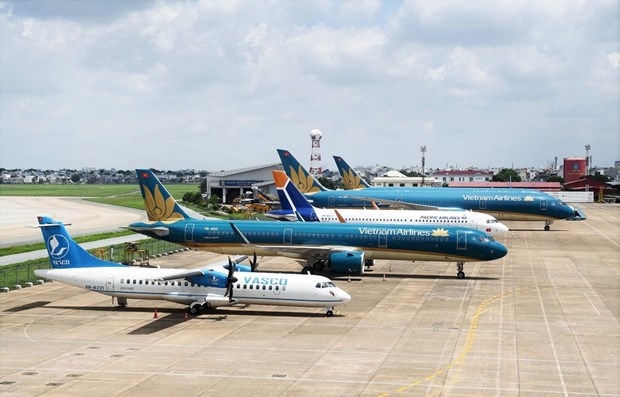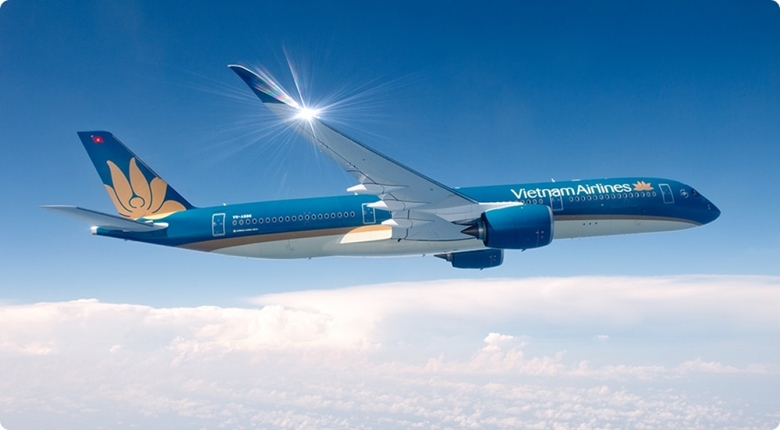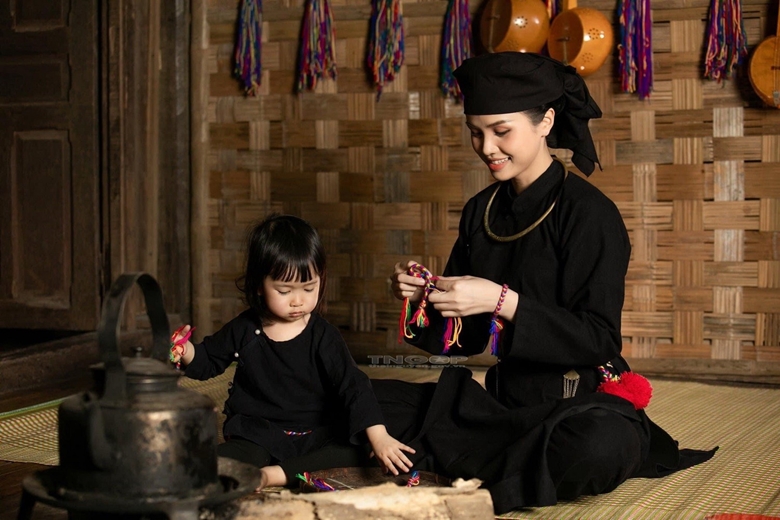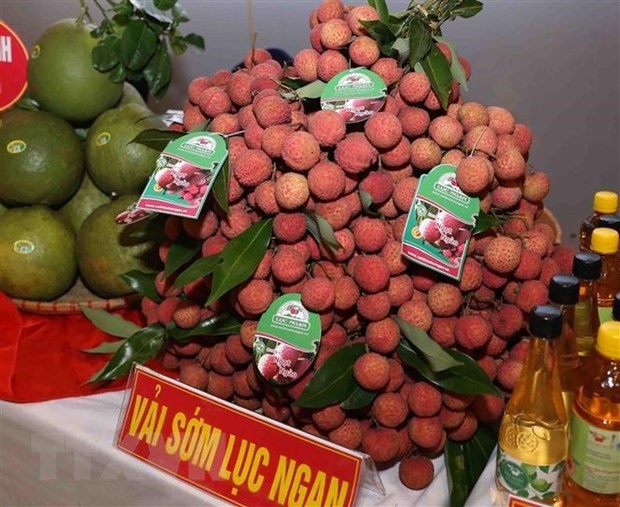 |
| Aircraft of Vietnam Airlines Group at Noi Bai Airport. (Photo: Vietnam Plus) |
This figure represents an increase of nearly 25% compared with the same period last year.
More than 14 million seats will be offered on domestic flights and the rest will be on international routes.
Every day, there will be nearly 30 round-trip flights on the Hanoi-Ho Chi Minh City route and more than 35 round-trip flights between Hanoi/Ho Chi Minh City and Da Nang. Flight frequency may continue to increase during the holidays and peak summer periods.
Vietnam Airlines plans to resume frequency on routes to Europe, Australia, China, Hong Kong (China) and Cambodia as well as to increase flights on peak occasions on routes to Japan and the Republic of Korea.
The airline will raise the frequency from 6 to 7 flights per week on the Hanoi - Paris (France) route, from 8 to 10 flights per week on the route to Germany, from 3 to 5 flights per week on the route to the UK. The carrier will operate 7 flights per week, instead of 6, on the Ho Chi Minh City-Sydney and the Ho Chi Minh City-Melbourne routes.
As for Asia, the airline will resume flights between China and Da Nang city from April 27. From July, Vietnam Airlines will increase the frequency of daily flights on routes between Hanoi/Ho Chi Minh City and Hong Kong (China) and Da Nang - Narita (Tokyo, Japan).
In July and August this year, the national flag carrier plans to raise the frequency of flights between Ho Chi Minh City and Narita from 11 to 14 flights per week and add more flights between Hanoi/Ho Chi Minh City City and Siem Reap (Cambodia).
To stimulate tourism demand in the coming time, Vietnam Airlines will introduce incentive programmes for passengers as well as participate in tourism promotion at domestic and foreign destinations. The airline plans to focus on those routes with strong potential but not widely known by tourists.
It will also focus on upgrading the quality of products and services to meet the increasing requirements of passengers.
Airlines ready for return of Chinese tourists to Vietnam
Vietnamese aviation enterprises have huge opportunities ahead to increase revenue following China’s decision to add Vietnam into the list of countries that can receive groups of Chinese tourists from March 15 on a pilot basis, reported VOV.
 |
| Photo for illustration (Source: VOV) |
A representative of national flag carrier Vietnam Airlines said that the local airline has made early preparations ahead of the return of Chinese tourists.
In December last year, as soon as China moved to ease rules on flight permits and quarantine requirements, Vietnam Airlines reopened air routes connecting Hanoi and Ho Chi Minh City to Guangzhou and Shanghai, as well as increasing the frequency of flights to these destinations.
The airline also unveiled plans to resume four air routes between Da Nang and China’s Guangzhou, Shanghai, and Chengdu, as well as between Hanoi and Chengdu from April 2023, using wide-body Airbus A350s and Boeing 787s.
Vietnam Airlines is currently examining plans to restore a route connecting Hanoi with Beijing Daxing international airport.
Meanwhile, budget airline Bamboo Airways has also formulated a scenario to welcome back Chinese tourists. Since the beginning of December last year, the carrier has launched direct flights connecting Hanoi to Tianjin, operating one flight per week.
Starting from April the airline plans to start operating the charter route Nha Trang - Macao with a frequency of four flights per week, as well as from Hanoi and Ho Chi Minh City to Hekou with a frequency of three flights per week.
Bamboo Airways is negotiating the opening of new routes with partners, hoping to launch in in May or June, said the airline’s representative.
Elsewhere, low-cost airline VietJet Air also revealed that it has devised plans to reopen a series of routes to Beijing, Shanghai, Hangzhou, Chengdu, Chongqing immediately after the northern neighbour’s reopening.
According to a representative of VietJet Air, passengers can enjoy a variety of options for direct flights from Ho Chi Minh City, Da Nang, and Phu Quoc to Hong Kong (China) and a wide flight network connecting destinations throughout Southeast Asia.
Economist Dr. Le Dang Doanh said China's reopening of group tours to Vietnam starting from March 15 is anticipated to significantly stimulate consumption demand in the aviation, transportation, and accommodation industries.
He predicted that tourist destinations in the central region would attract more Chinese tourists than other places as the tourists tend to prefer sports and entertainment activities by the sea, and sample distinctive cuisine in the region.
Sharing this viewpoint, a representative from a travel firm in Hanoi said that there is ample room for the further development of the Chinese tourism market as their spending is rather high compared to those from other markets.
A survey on international visitors to Vietnam in 2019 by the Vietnam National Administration of Tourism showed Chinese visitors spend US$1,022 on a trip on average, higher than those from markets such as Japan, the Republic of Korea, and South Asian nations.
Statistics show in 2019 approximately 155 million Chinese people travelled across the globe, spending US$255 billion on services. Among the travelers, 5.8 million chose Vietnam as one of their destinations, making up one third of the total number of foreign travelers to the country.
Vietnamese village named among world’s best tourism villages
Thai Hai reserve area, home to an ecological house-on-stilts village in the northern province of Thai Nguyen, was named as one of the 32 Best Tourism Villages 2022 by the UN World Tourism Organization (UNWTO), during a ceremony held on March 12 in Saudi Arabia, reported VOV.
 |
| Thai Hai village is named among world’s best tourism villages. (https://thainguyen.gov.vn) |
Thai Hai village is located in the north of Thai Nguyen province and is the only Southeast Asian representative to make the global list.
Situated just an hour drive from Hanoi, the site covers an area of 70 hectares and is home to a total of 30 traditional stilt houses belonging to the Tay ethnic minority people.
The village is capable of accommodating roughly 500 guests, thereby allowing tourists to participate in eco-tourism activities whilst exploring the traditional culture and lifestyle of the local Tay people.
Visitors to the area can experience daily living alongside villagers, taking part in activities such as growing and collecting vegetables, as well as going fishing and having fun by playing traditional games.
 |
The conservation area in the style of stilts bears the typical culture of the Tay ethnic group in Thai Nguyen
(https://thainguyen.gov.vn) |
In 2022, a total of 136 villages of 57 UNWTO member countries were nominated for the title. Of the total, 32 villages from 18 countries globally were awarded the title, with some of the villages featured including Dazhai of China, Pyeongsa-ri of the Republic of Korea, Lamas of Peru, and Sauris-Zahre of Italy.
According to the UNWTO, the award recognises rural destinations that embrace tourism as a driver for the cause of development and new opportunities for jobs and income, while simultaneously preserving and promoting community-based values and products.
The award also acknowledges villages for their commitment to innovation and sustainability across all spheres, including economics, social affairs, and the environment, with a specific focus on developing tourism in line with the Sustainable Development Goals (SDGs).
Trademark protection important for farm produce to go far in int'l markets
It’s critical for Vietnam to focus on promoting intellectual property rights for areas associated with agricultural products which would enable farm produce to go far in international markets.
 |
| Luc Ngan "thieu" lychee is the first agricultural product of Vietnam granted a certificate of geographical indication in Japan. (Photo: VNA) |
According to VNA, the Ministry of Agriculture and Rural Development was planning to propose the Government approval to build a decree on managing national brands of agricultural products. This is pressing as the export of agricultural products was seeing a significant drop in the context of increasing uncertainties in the global market.
Statistics showed that the agro-forestry-aquatic product export value was estimated at 6.28 billion USD in the first two months of this year, dropping by 22.5% against the same period last year.
Director of the ministry’s Agro Processing and Market Development Authority Nguyen Quoc Toan said that economic and political instabilities coupled with changes in production policies of many countries made many farm produce of Vietnam lose advantages, such as coffee, rice, cashew, tra fish and timber and wooden products.
It’s time to attach greater attention to protecting brands and geographical indications for farm products to go far in the international markets, he said, adding that protected brands and geographical indications would help increase value while creating confidence among consumers about their origin and quality.
Bac Giang was a good example of protecting the brands of agricultural products in foreign markets.
The northern province was known for the largest “thiêu” lychee production in Vietnam with a total area of more than 28,000 hectares and an annual output of about 200,000 tonnes. The specialty was thiều lychee from Luc Ngan district which provided 120,000 tonnes and brought a value of more than 3 trillion VND each year.
Luc Ngan “thiêu” lychee is currently granted certificates of industrial property protection by the Ministry of Science and Technology in seven countries, including China, Laos, Cambodia, the Republic of Korea, Singapore, Australia and the US. This is also the first agricultural product of Vietnam granted a certificate of geographical indication in Japan, opening up significant opportunities for this product to reach out to international markets.
Bac Giang also developed trademarks for Yen The hill chicken which was protected in China, Laos and Singapore and Chu noodle protected in Japan, the Republic of Korea, Thailand and Laos. The province also built brands for Yen Dung fragrant rice and Van Village wine.
Nguyen Phuc Thuong, Deputy Director of the provincial Department of Science and Technology, said that trademark protection contributed to increasing the value of agricultural products. Products with protected trademarks had guaranteed quality and origin, met the requirements of export markets and gained the trust of consumers.
However, the protection of geographical indications in foreign markets remained complicated in terms of time, procedures and costs, he said.
For example, it took nearly three years to negotiate the protection of geographical indication for Lục Ngạn thiều lychee in Japan.
Many other provinces and cities paid attention to the development of intellectual property for local products.
However, the use of geographical indications for the commercialisation of products remained inefficient.
Stressing that products with protected geographical indications were mainly agricultural products, Mai Van Dung, from the Intellectual Property Office of Vietnam, said there were challenges in the protection of geographical indications.
While there was an increasing trend of protecting processed products, not many processed products of Vietnam were protected, he said. In addition, the production scale of protected products remained modest.
According to Tran Le Hong, Deputy Director of the Intellectual Property Office of Vietnam, the number of geographical indications increased strongly recently but just a few products were successfully commercialised in the domestic market and for exports.
To date, only 40 out of 94 products with protected geographical indications were exported, of which, only 26 were printed on the packaging and labels when exported while the rest of 14 were exported under other brands.
According to Thuong, greater effort must be taken to increase communication and provide training to improve the awareness of intellectual property and form a culture of intellectual property protection as well as encourage innovation.
Consultancies and guidance would also be given to localities, businesses and cooperatives in registering and establishing rights to products of high economic value with a focus on building geographical indications for key products.
Special attention should be paid to foreign market research for commercially potential products to implement protection in export markets.
Trademark protection alone was not enough, he said, adding that it was also critical to strengthen production linkage and develop value chains to ensure traceability, origin and quality of products./.